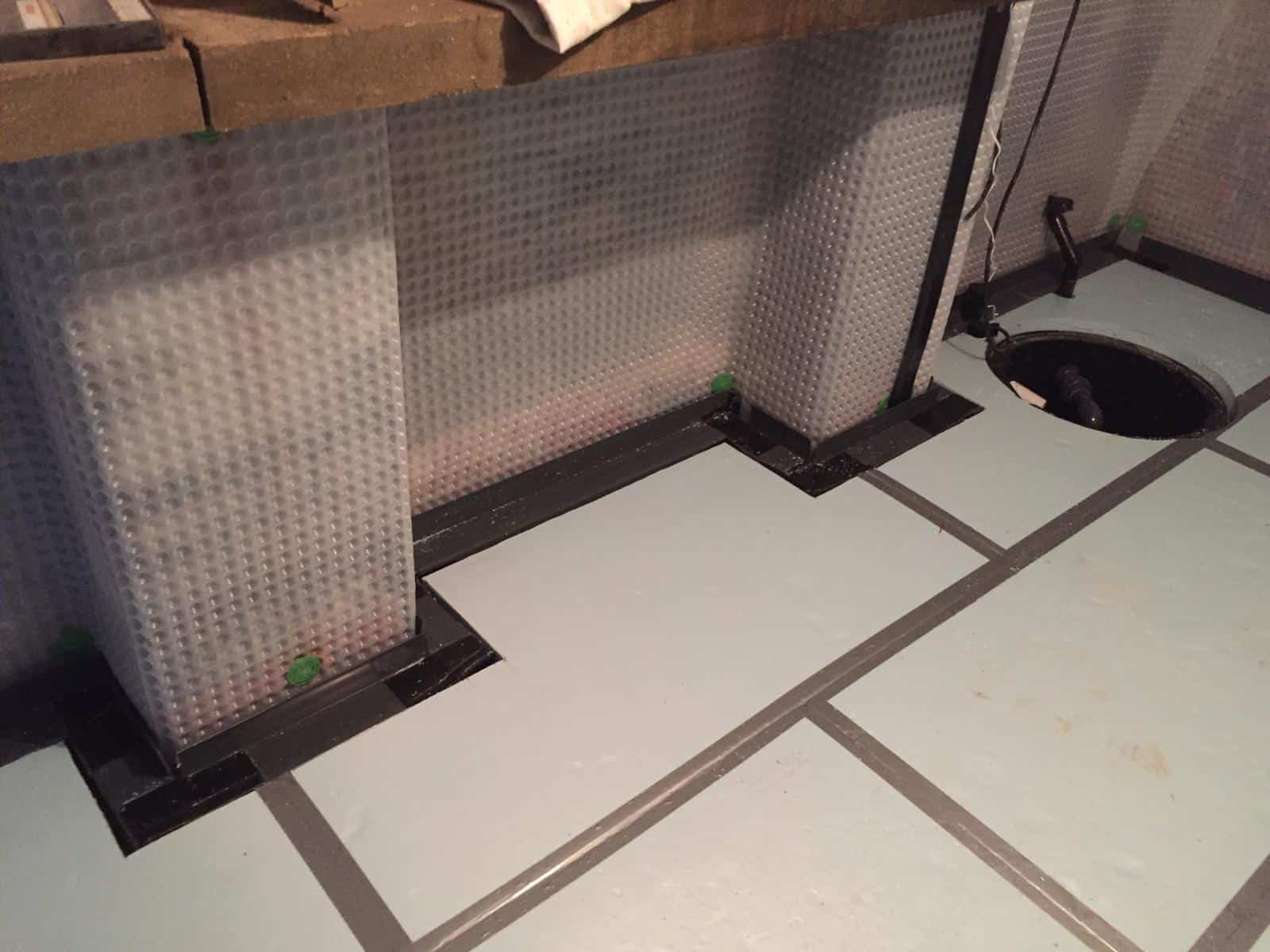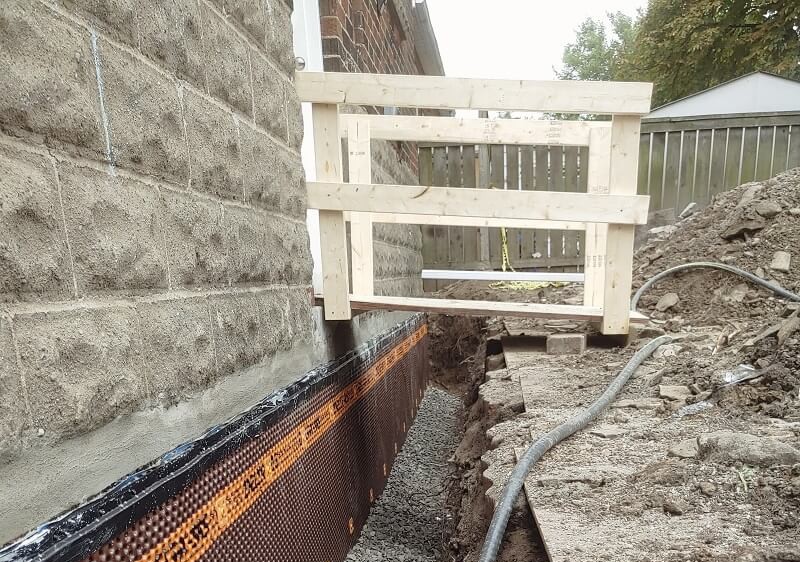Checking Out the Various Techniques and Solutions for Effective Damp Proofing
Dampness in buildings postures considerable challenges to both architectural stability and interior air high quality. Different techniques and services have actually arised to battle this pervasive issue. From standard damp-proof membrane layers to innovative chemical therapies, each approach provides one-of-a-kind benefits. Understanding these choices is essential for effective wetness control. Nevertheless, selecting the appropriate remedy depends on specific structure conditions and needs, prompting more expedition into one of the most reliable damp proofing techniques offered.
Recognizing the Reasons For Moisture
Although wetness can arise from various sources, recognizing these causes is vital for efficient removal. Frequently, moisture originates from 3 main sources: increasing damp, passing through damp, and condensation. Rising damp happens when groundwater takes a trip up via permeable materials, such as brick or rock, commonly because of an absence of a reliable obstacle (damp removal newcastle). Penetrating damp is normally brought on by exterior variables, consisting of roof leakages, faulty rain gutters, or harmed walls, permitting water to infiltrate a home. Condensation, on the other hand, results from excess wetness airborne, frequently exacerbated by poor ventilation and temperature distinctions, resulting in water beads basing on surface areas. Identifying these underlying problems is important, as each kind of moisture needs a customized method for remediation. Correct evaluation assists in figuring out one of the most effective services, inevitably securing the architectural honesty of a building and improving interior air top quality
Conventional Damp-Proof Membrane Layers

Chemical Damp-Proofing Solutions
Chemical damp-proofing services offer a cutting-edge strategy to preventing moisture intrusion in buildings. These techniques typically entail the application of fluid chemicals that penetrate masonry and develop an obstacle versus rising moist. Frequently used chemicals consist of silanes, siloxanes, and other water-repellent representatives that react with surface materials to create a hydrophobic layer.The application process typically needs boring holes into the wall surfaces, injecting the chemical option, and allowing it to heal. This method is especially helpful for older structures where traditional damp-proof membranes may be impractical. Chemical damp-proofing can be much less disruptive and extra affordable than considerable restoration projects.While effective, these options depend on proper application and ecological problems for peak efficiency. mould treatment newcastle. Normal maintenance and surveillance are vital to assure the long life of the damp-proofing therapy. Generally, chemical damp-proofing represents a functional option for safeguarding structures against moisture-related damage
Cavity Wall Surface Construction Techniques
Cavity wall surface building and construction methods offer numerous benefits, particularly in dampness control and energy efficiency. By including an air space between 2 layers of masonry, these wall surfaces successfully mitigate water access while boosting insulation. This combination not just shields frameworks from wetness but likewise adds to reduced power intake.
Advantages of Dental Caries Wall Surfaces
When taking into consideration reliable moist proofing techniques, the benefits of cavity wall surfaces attract attention prominently. Cavity wall surfaces include two different layers, developing an air space that efficiently lowers wetness infiltration. This design decreases the risk of moisture, as the outer wall surface acts as an obstacle against rainfall and water ingress. Furthermore, tooth cavity wall surfaces improve thermal insulation, which adds to power performance by lowering heat loss. They also offer sound insulation, helping to produce a quieter interior setting. Additionally, the air void permits ventilation, which assists in dampness control and reduces the possibility of mold development. These benefits not just boost the overall comfort of a building however likewise contribute to its long life and structural honesty.
Wetness Control Strategies
Reliable moisture control methods are vital in cavity wall surface building to ensure long-lasting protection against wetness. One primary technique includes the consolidation of weep holes, which facilitate water drainage from the dental caries, preventing buildup. Additionally, using breathable membranes can assist take care of moisture levels while enabling trapped vapor to run away. Proper positioning of insulation is likewise crucial, as it must not block here drainage paths. Furthermore, making certain that the outer fallen leaves of the dental caries wall are constructed with waterproof products improves total resilience. Regular upkeep checks are crucial to identify any type of obstructions or damage early, securing the structure's honesty. Eventually, a mix of these strategies forms a durable defense versus moisture invasion in tooth cavity walls.
Insulation and Power Performance
Insulation plays a vital role in boosting energy effectiveness within dental caries wall surface building and construction. By including insulating materials, these walls create a thermal barrier that decreases warmth loss and reduces power usage. Reliable insulation not just helps keep a steady indoor temperature level but likewise reduces the danger of dampness, as it prevents condensation within the wall surface cavity. Numerous techniques, such as using rigid foam boards or mineral wool, can be employed to attain excellent insulation efficiency. Furthermore, appropriate setup is necessary to ensure that spaces and gaps are lessened, which can otherwise endanger power performance. Inevitably, a well-insulated cavity wall surface contributes considerably to general sustainability and decreases cooling and heating costs for property owners.
Outside Damp Proofing Techniques
Outside damp proofing techniques are crucial for securing frameworks from wetness infiltration. Two reliable methods consist of the application of waterproof membrane layers and the installation of French drains. These services aid reduce water build-up and preserve the stability of buildings.
Waterproof Membrane Layer Application
While various approaches exist for preventing dampness access, the application of water resistant membrane layers continues to be a very effective external wet proofing technique. These membrane layers are generally made from materials such as polyethylene, rubber, or modified bitumen, offering a durable barrier versus water infiltration. The setup process includes using the membrane to the external surface areas of foundations or wall surfaces, ensuring total insurance coverage to protect against leakages. Proper bond and securing at joints are vital to taking full advantage of performance. Water-proof membranes can be applied in numerous forms, consisting of liquid coverings and sheet membranes, permitting adaptability based on the details demands of the framework. This approach not only shields buildings from moisture yet additionally boosts their longevity and structural honesty.
French Drainpipe Setup
One effective method for handling groundwater and stopping dampness accumulation around a building's foundation is the installment of a French drain. This drain system includes a trench full of crushed rock and a perforated pipeline that redirects surface water far from the structure. Correct installment requires mindful planning, making sure that the drainpipe inclines far from the framework to promote optimal water circulation. In addition, the location of the drainpipe is important; it must be placed in areas susceptible to pooling or excess moisture. Regular upkeep, including clearing up debris from the gravel and making certain the pipeline continues to be unblocked, is essential for long-lasting efficiency. Eventually, a well-installed French drain can significantly minimize the threat of water-related concerns in structures and basements.
Interior Waterproofing Strategies
Interior waterproofing approaches are vital for safeguarding a building's inside from dampness seepage and possible water damage. These techniques normally involve the application of specific materials and strategies made to produce a moisture obstacle within the structure. One common method is the use of water resistant finishings or sealants on walls and floors, which protect against dampness from penetrating surfaces.Additionally, mounting interior drain systems, such as sump pumps, can successfully manage water buildup in basements and crawl rooms. An additional technique entails using vapor barriers, which are installed to prevent wetness movement from the ground right into living spaces.Moreover, addressing any fractures or voids in walls or structures with appropriate sealers ensures a thorough protection against water breach. By applying these interior waterproofing strategies, property proprietors can substantially lower the threat of mold and mildew development, structural damages, and other moisture-related problems. Proper implementation of these strategies is important for long-lasting defense and structure honesty.
Normal Upkeep and Evaluation Practices
Normal upkeep and inspection methods are important for guaranteeing the lasting performance of wet proofing services in any type of structure. Regular checks make it possible for building owners to recognize early indicators of moisture intrusion, such as peeling off paint, mold growth, and moldy smells. These indicators can indicate underlying problems that need immediate attention.Inspections need to be performed a minimum of each year, concentrating on prone locations like cellars, crawl spaces, and exterior wall surfaces. During these assessments, homeowner need to check out sealants, drain systems, and air flow to confirm they work correctly.Additionally, maintaining seamless gutters and downspouts is vital, as clogged systems can result in water buildup near the foundation. Executing a routine maintenance timetable, together with prompt repair work, can substantially extend the life expectancy of damp proofing actions and shield the architectural honesty of the building. Proactive procedures eventually contribute to the general health and wellness of the living environment.
Regularly Asked Concerns
How Much Time Does Damp Proofing Commonly Last?
The period of damp proofing performance varies, normally lasting in between 20 to half a century. Factors such as application quality, environmental conditions, and maintenance techniques greatly influence the long life of the damp proofing treatment.

Can I Damp Proof My Home Myself?
The individual contemplated the expediency of DIY damp proofing. With proper study and the ideal materials, it is possible. However, they also acknowledged the significance of expert assistance to guarantee long-lasting efficiency and stop future issues.
What Are the Indicators of Ineffective Damp Proofing?
Signs of inefficient moist proofing include relentless moldy odors, noticeable mold and mildew growth, peeling paint, moist spots on wall surfaces, and timber decay - mould removal newcastle. House owners must deal with these problems immediately to stop more damages and health and wellness issues
Does Damp Proofing Affect Indoor Air Top Quality?

Just How Much Does Professional Damp Proofing Price?
Professional damp proofing prices vary significantly, typically varying from $1,000 to $5,000 depending upon the building's dimension, the degree of the moist concern, and selected techniques. Each scenario needs a tailored evaluation for exact pricing. Frequently, wetness stems from three main sources: climbing damp, penetrating moist, and condensation. When thinking about reliable wet proofing methods, the benefits of dental caries walls stand out plainly. External damp proofing techniques are necessary for shielding structures from moisture infiltration. While numerous approaches exist for stopping moisture ingress, the application of water-proof membrane layers remains a very reliable external wet proofing technique. Indications of ineffective wet proofing include consistent stuffy odors, noticeable mold growth, peeling paint, wet spots on walls, and timber degeneration.
Comments on “Addressing condensation problems permanently with mould treatment newcastle”